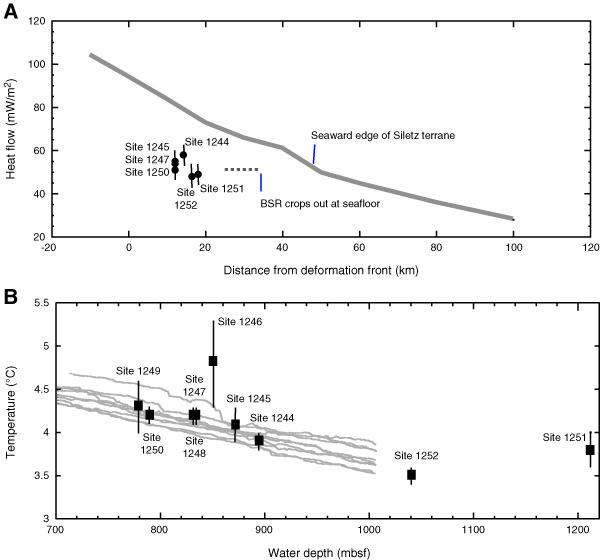
Figure F10. A. Heat flow observed at Leg 204 drilling sites compared to heat flow calculated based on the age of the subducting oceanic crust and the thickness of the overlying sediments (thick gray line from Oleskevich et al., 1999). The abrupt decrease in heat flow ~50 km east of the deformation front results from the insulating effect of the low thermal–conductivity Siletz terrain. Heat flow inferred from bottom-simulating reflection (BSR) observations on mid-slope, where the BSR shallows and merges with the seafloor in ~500 m of water (Tréhu et al., 1995), is shown as a dotted line. B. Seafloor intercept of the best-fit thermal gradient at each site compared to typical ocean temperature as defined by GLOBEC CTD data from a nearby site as measured 4–5 times/yr in 1999 and 2002.


![]()